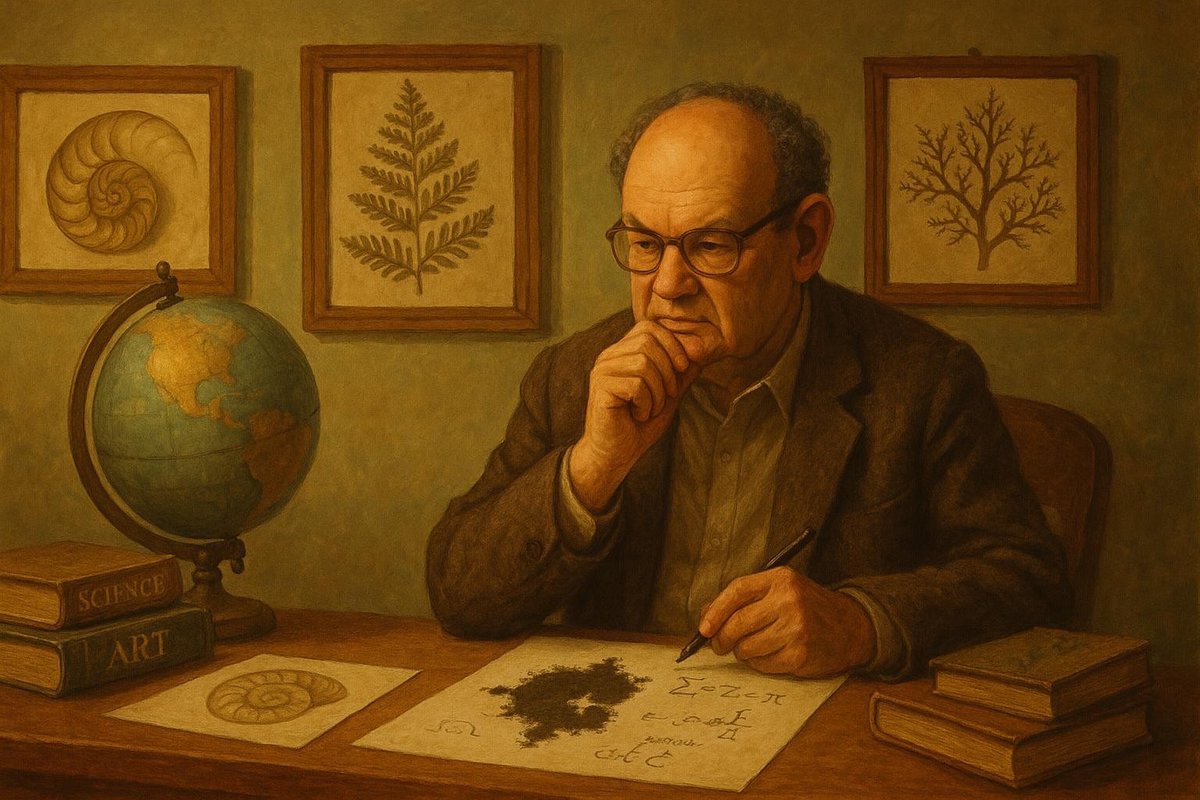
Early Influences: The Seeds of Fractal Thought
Imagine a young mind captivated by the swirling patterns of nature, from the spirals of a seashell to the patterns of a fern leaf. This is where the story of fractals begins. The term ‘fractal’ was coined by Benoît Mandelbrot in 1975, but its roots stretch much earlier, intertwining with art and nature’s innate complexity. Mandelbrot was influenced by the works of early mathematicians like Georg Cantor and Gaston Julia, who explored self-similar patterns.
- The concept of self-similarity, where a smaller part mirrors the whole, fascinated artists and mathematicians alike.
- Nature’s patterns served as an inspiration long before fractals were formally defined.
Before Mandelbrot’s formal definition, fractals were an abstract notion, yet artists like M.C. Escher had already visually represented them. The cultural milieu of the 20th century, steeped in exploration and change, provided fertile ground for such interdisciplinary connections. No wonder these patterns resonated across disciplines, sparking curiosity and invention.
Mental Models: Visualizing the Infinite
The mental models used to conceptualize fractals are as intricate as the patterns themselves. Mandelbrot’s mathematical genius lay in his ability to visualize complex systems. He saw beauty in chaos, recognizing that irregularity was just another form of order. This perspective allowed him to see the universe as a canvas, with fractals as both the brushstrokes and the masterpiece.
- Mandelbrot’s work was not limited to mathematics; it was a bridge between science and art.
- The Mandelbrot Set, a mathematical set of points, became a visual icon for fractals.
Interestingly, many people believe these mental models helped to demystify chaos theory, making it more accessible not only to scientists but also to artists and philosophers. This cross-disciplinary approach was crucial during a time when the world was shifting towards a more interconnected understanding of knowledge.
Challenges & Resilience: Navigating the Unknown
Despite its eventual acclaim, the journey to establish fractals as a legitimate field of study was fraught with challenges. Early on, Mandelbrot faced skepticism from traditionalists in mathematics. His ideas challenged the rigidity of classical geometry, and the concept of fractional dimensions was initially dismissed by many.
- Fractals were initially seen as abstract and impractical.
- Mandelbrot’s persistence redefined the boundaries of mathematical thought.
Of course, resilience is often the mother of invention. Mandelbrot’s determination to prove the validity of his ideas sparked a paradigm shift, one that required a blend of creativity and scientific rigor. As time went on, his theories gained traction, influencing fields as varied as computer graphics and environmental science.
Legacy: Fractals in Art and Beyond
Today, the legacy of fractals extends far beyond mathematics. They have become a symbol of the deep connections between disciplines. Artists use fractals to explore themes of infinity and complexity, while scientists apply fractal geometry to model natural phenomena.
- Fractals have inspired new artistic movements, blending digital art with traditional techniques.
- In science, fractals help explain complex systems, from ecosystems to galaxy formations.
This legacy is a testament to the enduring power of interdisciplinary thinking. Fractals remind us that beauty and structure coexist, that art and science are not separate but harmonious. Mandelbrot’s work has opened new avenues of exploration, inviting us all to see the world through a lens of infinite possibility.
Fuel Someone Else’s Curiosity
Let the fractal legacy inspire your own journey of discovery. Share these connections with others, sparking curiosity and wonder. By blending art, science, and philosophy, we continue a tradition of exploration that knows no bounds.

Leave a Reply